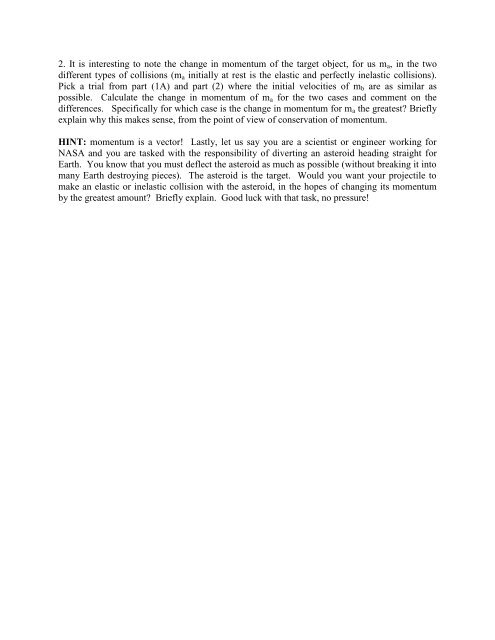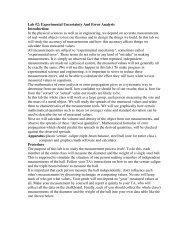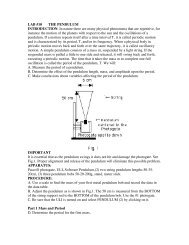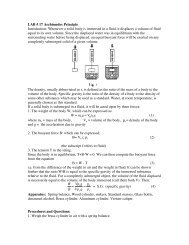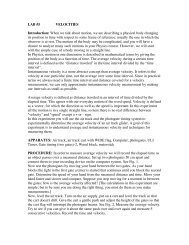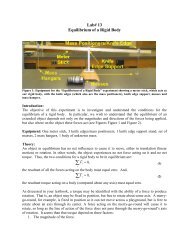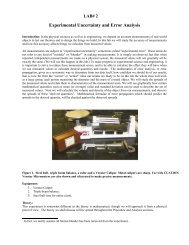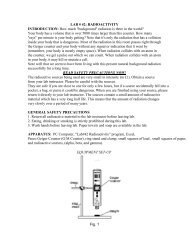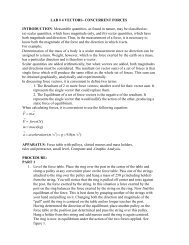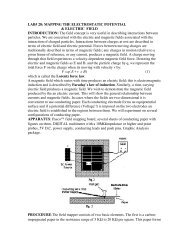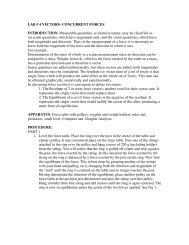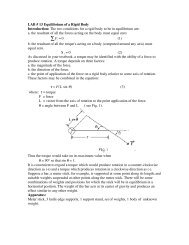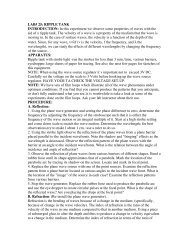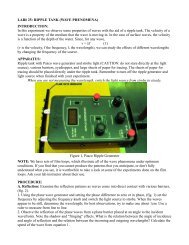Momentum - Elastic & Inelastic Collisions PART 1 Elastic Collisions
Momentum - Elastic & Inelastic Collisions PART 1 Elastic Collisions
Momentum - Elastic & Inelastic Collisions PART 1 Elastic Collisions
Create successful ePaper yourself
Turn your PDF publications into a flip-book with our unique Google optimized e-Paper software.
2. It is interesting to note the change in momentum of the target object, for us m a , in the two<br />
different types of collisions (m a initially at rest is the elastic and perfectly inelastic collisions).<br />
Pick a trial from part (1A) and part (2) where the initial velocities of m b are as similar as<br />
possible. Calculate the change in momentum of m a for the two cases and comment on the<br />
differences. Specifically for which case is the change in momentum for m a the greatest? Briefly<br />
explain why this makes sense, from the point of view of conservation of momentum.<br />
HINT: momentum is a vector! Lastly, let us say you are a scientist or engineer working for<br />
NASA and you are tasked with the responsibility of diverting an asteroid heading straight for<br />
Earth. You know that you must deflect the asteroid as much as possible (without breaking it into<br />
many Earth destroying pieces). The asteroid is the target. Would you want your projectile to<br />
make an elastic or inelastic collision with the asteroid, in the hopes of changing its momentum<br />
by the greatest amount? Briefly explain. Good luck with that task, no pressure!


